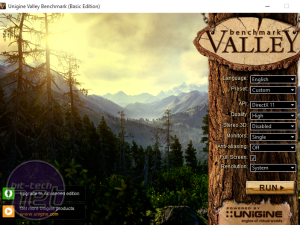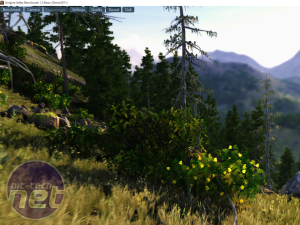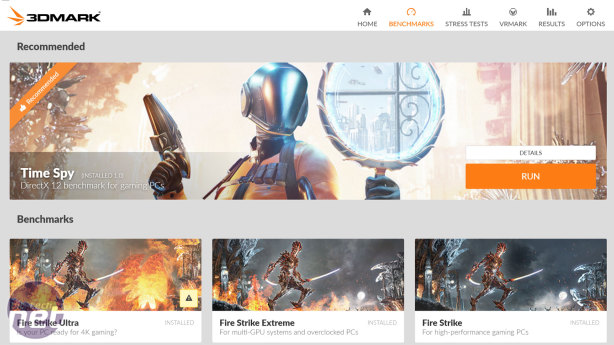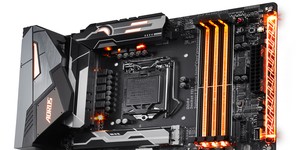Gigabyte Z270-Gaming K3 Review
Written by Antony Leather
February 3, 2017 | 17:13
Tags: #best-kaby-lake-motherboard #best-z270-motherboard #cheapest-kaby-lake-motherboard #kaby-lake #lga1151 #z270
Companies: #gigabyte

Ashes of the Singularity
Publisher: Stardock
We use the built-in benchmark of Ashes of the Singularity, which runs through an automatic play-through scene in the game. We've selected the CPU-intensive benchmark option and used 'High' settings with MSAA disabled, all of which are located in the game's video options and benchmark menus. On startup, we also select the DirectX 12 version, which is only available to use in Windows 10. We use a 30-second Fraps benchmark to obtain the minimum and average frame rate during the benchmark, beginning at the start.
Ashes of the Singularity
DX12 CPU test, 'High' settings
- Gigabyte Z270-Gaming K3 (5GHz)
- Asus ROG Strix Z270G Gaming (5GHz)
- Asus Maximus IX Hero (5GHz)
- MSI Z270 XPower Gaming Titanium (5GHz)
- Gigabyte Aorus Z270X-Gaming 7 (5GHz)
- MSI Z270 Gaming Pro Carbon (5GHz)
- Asus ROG Strix Z270F Gaming (5GHz)
- Gigabyte Z270-Gaming K3 (Stock)
- Asus ROG Strix Z270G Gaming (Stock)
- Asus Maximus IX Hero (Stock)
- MSI Z270 XPower Gaming Titanium (Stock)
- Gigabyte Aorus Z270X-Gaming 7 (Stock)
- MSI Z270 Gaming Pro Carbon (Stock)
- Asus ROG Strix Z270F Gaming (Stock)
-
-
41
-
45
-
-
-
41
-
45
-
-
-
41
-
45
-
-
-
41
-
45
-
-
-
41
-
45
-
-
-
41
-
45
-
-
-
41
-
45
-
-
-
39
-
43
-
-
-
39
-
43
-
-
-
39
-
43
-
-
-
39
-
43
-
-
-
39
-
43
-
-
-
39
-
43
-
-
-
39
-
43
-
0
10
20
30
40
50
Frame per Second
-
Minimum
-
Average
Unigine Valley 1.0
Publisher: Unigine

Unigine's free Valley 1.0 benchmarking tool works well as a graphics benchmark as it is GPU-limited and is thus incredibly taxing on the GPU whilst placing the CPU under very little stress. Unigine's scoring system is effectively linear: A card with 2,000 points is considered twice as fast as one with 1,000 points, and half as fast as one with 4,000 points. As such, you can easily replicate and run the test on your own system to gauge roughly how big a difference an upgrade would likely make for you.
Unigine Valley
1,920 x 1,080, 'High' settings
- Asus ROG Strix Z270F Gaming (4.2GHz/5GHz)
- Asus ROG Strix Z270G Gaming (4.2GHz/5GHz)
- Gigabyte Z270-Gaming K3 (4.2GHz/5GHz)
- Asus Maximus IX Hero (4.2GHz/5GHz)
- MSI Z270 XPower Gaming Titanium (4.2GHz/5GHz)
- Gigabyte Aorus Z270X-Gaming 7 (4.2GHz/5GHz)
- MSI Z270 Gaming Pro Carbon (4.2GHz/5GHz)
-
-
4965
-
4978
-
-
-
4961
-
4969
-
-
-
4947
-
4977
-
-
-
4946
-
4975
-
-
-
4944
-
4957
-
-
-
4938
-
4989
-
-
-
4935
-
4992
-
0
1000
2000
3000
4000
5000
Score (higher is better)
-
Stock
-
Overclocked
3DMark Time Spy
Publisher: Futuremark
3DMark recently added Time Spy, a DirectX 12 benchmark that runs at 1440p. It is designed to properly utilise the advantages of the DirectX 12 API. The benchmark is available for free, but you'll need to pay to change any of the settings, including the resolution. Nonetheless, it still serves as a useful at-a-glance comparison of performance in this increasingly important API.
3DMark Time Spy
CPU test, default settings
- Asus Maximus IX Hero (4.2GHz/5GHz)
- Gigabyte Aorus Z270X-Gaming 7 (4.2GHz/5GHz)
- Gigabyte Z270-Gaming K3 (4.2GHz/5GHz)
- MSI Z270 Gaming Pro Carbon (4.2GHz/5GHz)
- Asus ROG Strix Z270G Gaming (4.2GHz/5GHz)
- MSI Z270 XPower Gaming Titanium (4.2GHz/5GHz)
- Asus ROG Strix Z270F Gaming (4.2GHz/5GHz)
-
-
5837
-
6384
-
-
-
5816
-
6311
-
-
-
5801
-
6299
-
-
-
5740
-
6243
-
-
-
5722
-
6315
-
-
-
5719
-
6164
-
-
-
5692
-
6342
-
0
1000
2000
3000
4000
5000
6000
7000
Score (higher is better)
-
Stock
-
Overclocked









Want to comment? Please log in.